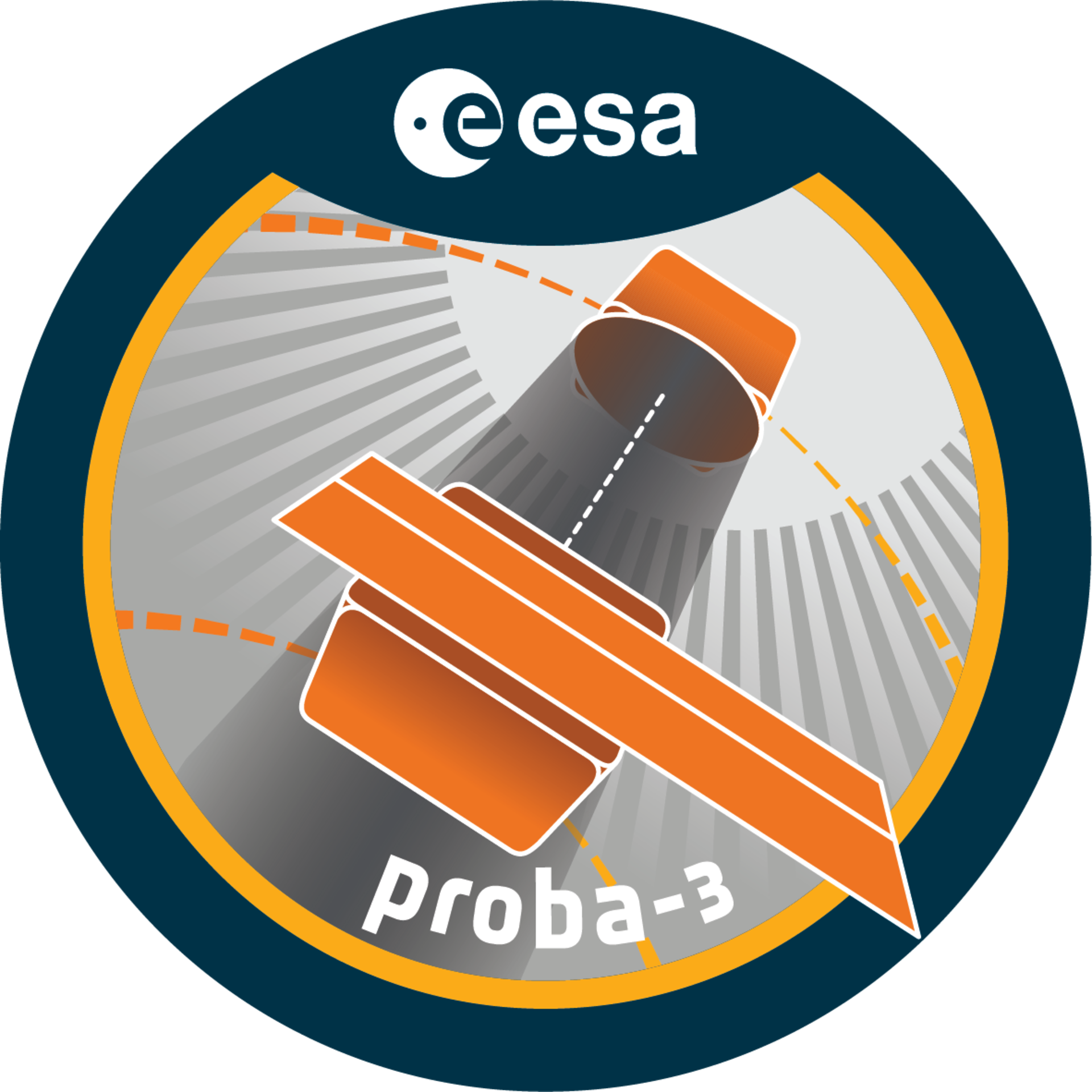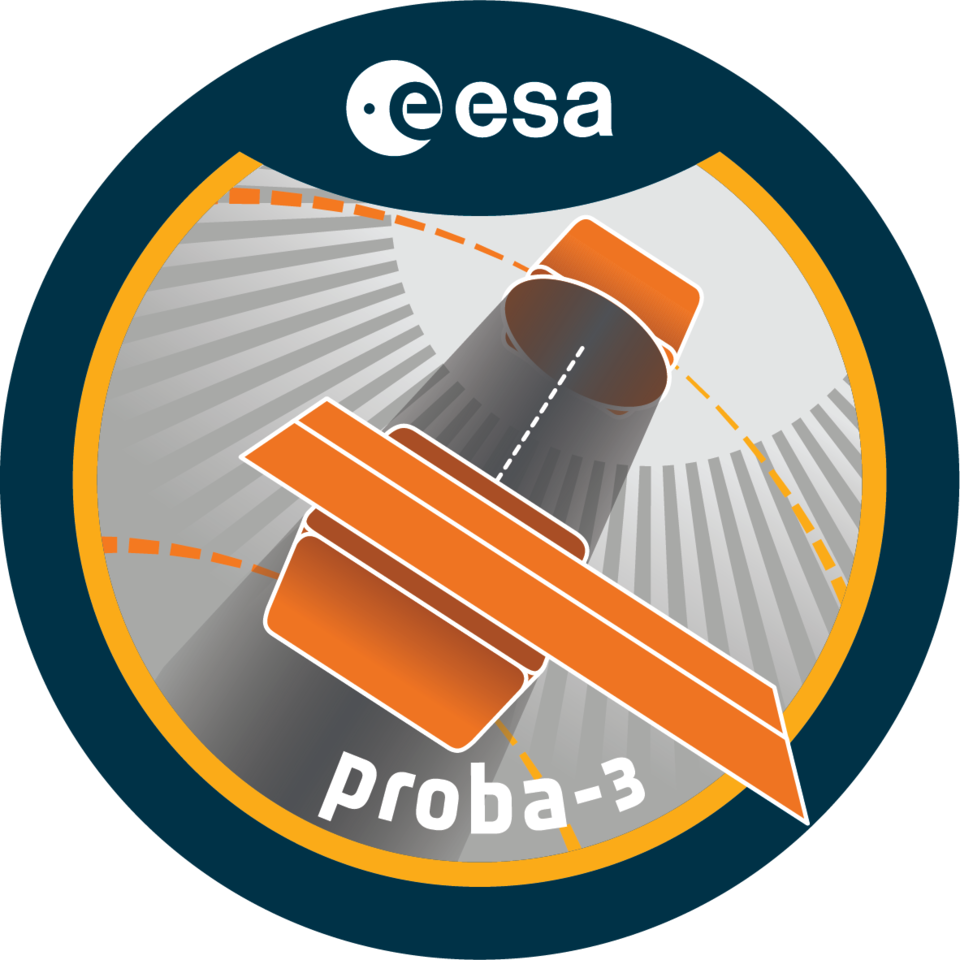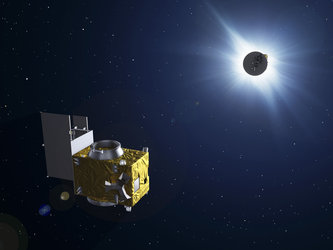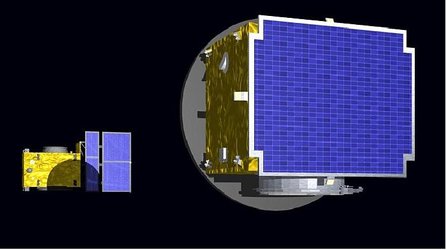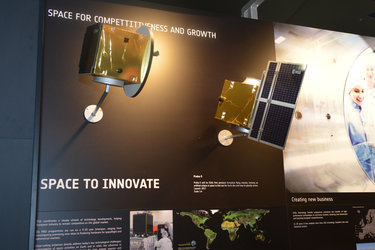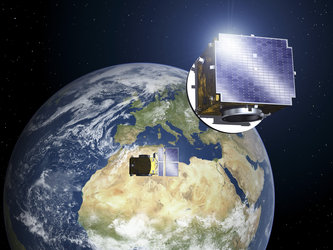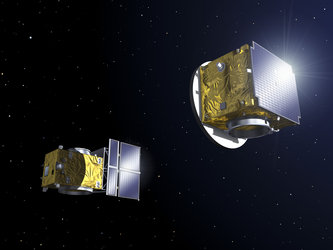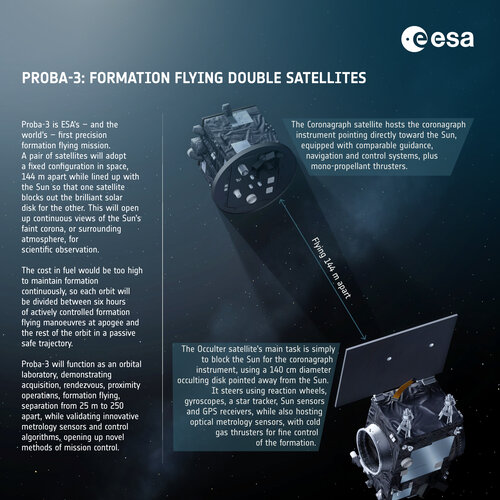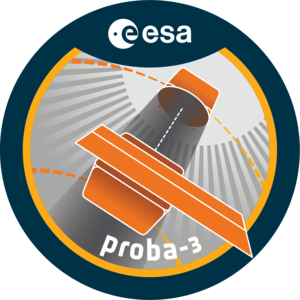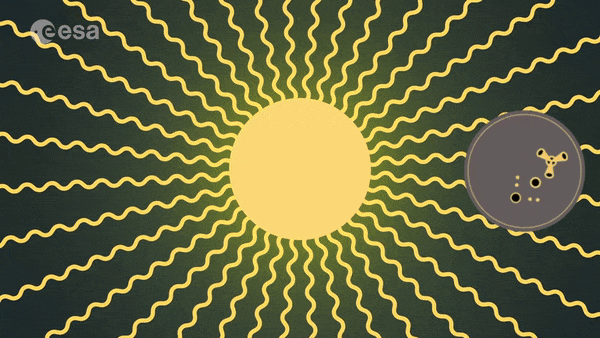Proba-3 Frequently Asked Questions
1. What are the Proba series of missions?
The Proba missions are a series of IOD (in-orbit demonstration) missions from the European Space Agency, for demonstrating and validating new technologies and concepts in orbit. They are based on small satellites, embarking payload and instruments to deliver actual data to users to demonstrate a new capability. They are developed under the General Support Technology Programme (GSTP) of ESA.
- Proba-1, launched in 2001, an Earth observation satellite with advanced on-board autonomy and embarked an innovative hyperspectral instrument. It has been operational for more than 20 years.
- Proba-2, launched in 2009, is observing the Sun, with more than 20 technology payloads and scientific instruments.
- Proba-V (for Vegetation), launched in 2012, it flies an innovative Earth imager, for multi-spectral global vegetation mapping.
- Proba-3, to be launched in 2024, will demonstrate precise formation flying by flying two satellites to achieve observation of the Sun’s inner corona.
2. Who developed Proba-3 and how long did it take?
Proba-3 is a project more than ten years in the making, which has been implemented with the industrial support of more than 40 companies across Europe, under the leadership of a core team of companies in Spain and Belgium:
- Sener Aerospace (System Prime)
- Redwire (avionics, satellite assembly and testing, satellite operations)
- Airbus Defence and Space (satellite thermo-mechanical and propulsion, satellite environmental testing)
- GMV (formation flying algorithm and software, on-ground flight dynamics system)
- Spacebel (on-board, ground system and simulation software)
- Centre Spatial de Liege (Coronagraph scientific instrument)
3. Why are there two satellites?
For Proba-3, there are two satellites to create the conditions for observation of the Sun corona, synthetising the equivalent of an extremely large instrument. One satellite features a telescope, kept in the centre of the shadow cast by the other satellite around 150 m away, thanks to an occulter disk. Maintaining the correct position in the shadow requires a precise formation flying capability.
4. How is Proba-3 powered?
Each Proba-3 satellite is powered through high efficiency solar panels.
5. Why is the mission being launched from India?
India's PSLV-XL launcher was chosen since the lift required to place the combined Proba-3 satellites (550 kg) on their desired highly elliptical orbit is above the capability of ESA's Vega-C launcher, while Ariane-6 would be too costly.
6. Do the satellites fly in formation autonomously or is are they controlled on the ground?
As the Proba acronym indicates - ‘PRoject for OnBoard Autonomy’ - Proba-3's formation flying experiments will be performed autonomously aboard.
7. Why do we need such accuracy for the formation?
When in position the two satellites will be precisely aligned so that the Occulter spacecraft casts a shadow across the Coronagraph space craft. If the two are not perfectly aligned then the bright disc of the Sun will not be hidden from the instrument and the corona will be obscured by its bright light.
8. Why is the formation flying being performed at such high altitude?
Any force exerted more on one satellite than the other will cause the formation to drift apart, which must be corrected for by the formation flying system, which consume on-board propellant. The Earth gravity is one such force, along with vestigial atmopheric drag and Earth's magnetic field. Accordingly Proba-3 will perform its formation flying around the top of its 60 000 km altitude orbit, as far from these perturbing forces as possible.
9. Why do we need a 150-m distance between the Occulter and Coronagraph spacecraft?
Stray light can spill over the edge of coronagraphs, a process called 'diffraction', which makes it difficult to observe the inner edges of the Sun's corona. Diffraction is exacerbated by a small distance between an occulter and a coronagraph. For Proba-3 the observing distance will be around two orders of magnitude larger than that of any other coronagraph so far.
10. Why do we study the corona?
The solar corona has many mysteries associated with it, starting with the counter intuitive fact that the corona is more than a million degrees warmer than the surface of the Sun underneath it. It is a major focus of scientific research and study, not only to improve our understanding of the Sun, but also as the origin of solar weather, such as coronal mass ejections or solar storms which can affect the functioning of satellites, or communication and power networks down on Earth.
11. Why is it so hard to study the Sun’s inner corona?
The inner corona is the corona region that is close to the Sun. The Sun is around a million times brighter than the brightest point within the corona. If the light from the Sun is not blocked, any observing telescope is blinded by this light and cannot see the corona, like trying to see a firefly next to a bonfire. The concept of a Coronagraph instrument, invented in the 1930s, is to use one or more occulting disks to block the Sun’s light. However, when attempting to observe the inner corona, an optical phenomenon called diffraction causes lightwave to spill around the edges of the coronagraph, reducing its effectiveness. Occulter size matters. During a total solar eclipse, the Moon is the occulting body and offers excellent opportunities to observe the inner corona. However total eclipses are rare and very brief.
12. How will Proba-3 create an eclipse between the two satellites?
The satellite called the Occulter Spacecraph (or OSC) features a 1.4-m-diameter occulting disk, which will be kept perpendicular to the direction of the Sun’s light. This disk will cast a shadow, of about 8 cm width at around 150 m. The satellite called the Coronagraph (or CSC) hosts a scientific telescope with a 5 cm aperture. The goal is to maintain, thanks to formation flying, the “Coronagraph” aperture within the 8 cm shadow with millimetric accuracy. This will happen when the two satellites are close to the apogee along their highly elliptical orbit (60 000 km altitude), where the Earth gravity force is weaker and formation maintenance requires less propellant.
13. What will we learn from these Proba-3 formation flying eclipses?
We already have instruments that can study the Sun, the low corona and the high corona but between the low corona and the high corona there is a region, a gap, where observations are difficult to make. Normally it is only possible to observe this region during a solar eclipse. This occurs when the Moon’s orbit places it between the Sun and Earth, casting a shadow on Earth. Solar eclipses can only occur during a new Moon and when the orbit is precisely correct, making them a rare occurrence. The Proba-3/ASPIICS (Association of Spacecraft for Polarimetric and Imaging Investigation of the Corona of the Sun) Coronagraph will examine the structure and dynamics of the corona in this crucial but hard-to-observe region. Compared to a total eclipse, each one of which which lasts just a few minutes and occurs only around 60 times a century, Proba-3 will be able to study the corona for six hours in every 19hr:36min orbit, a factor of a hundred improvement in uninterrupted study time.
14. Why is the formation flying only performed at the orbit apogee?
The cost in fuel would be too high to maintain formation throughout the orbit, so each orbit will be divided between six hours of formation flying manoeuvres at apogee and the rest of the orbit in passive safe drifting. The Proba-3 satellites will repetitively demonstrate acquisition, rendezvous, proximity operations, formation flying, coronagraph observations, separation and convoy flying every orbit.
15. What will happen with the satellites at the end of the mission?
The mission is expected to last two years. Afterwards, the orbit on which the satellites are flying will slowly decay due to gravitational perturbations from the Sun and the Moon, which will cause the satellite to naturally re-enter into the atmosphere within around five years after launch, in compliance with the space debris mitigation requirements.
16. When will we get the first results from Proba-3?
Around four months after launch, once the commissioning phase is complete.
17. What is the planned mission lifetime?
The nominal lifetime of the Proba-3 mission is two years.
18. Which ESA Member States are supporting the mission, and how much does it cost?
The Proba 3 mission is being supported by 13 ESA Member States: Austria, Belgium, Czech Republic, Denmark, Ireland, Italy, Luxembourg, Poland, Portugal, Romania Spain, Switzerland and the United Kingdom together with Canada as Cooperating State.
The main contributors are Spain at 38%, Belgium at 34%, Poland and Romania at about 4% each, together with Austria, Luxembourg, Switzerland and the UK at about 3% each, against a total budget under ESA’s General Support Technology Programme (GSTP) of €200 million.
The 200ME mission cost comprises:
| Launch | ~30 M€ |
| Operations & ground stations | ~15M€ |
| Science payload development and operations | ~15M€ |
| Procurement of the two spacecraft & development of the formation-flying technologies | 140 M€ |
Spain and Belgium through their companies Sener, Redwire, Airbus Spain, Spacebel and GMV compose the core industrial team. Centre Spatial de Liège is responsible for the coronagraph instrument. Companies from the participating countries are participating in all other aspects of the mission, i.e. the space segment, formation flying technology, the ground segment, instruments and mission operations conducted from ESA’s ESEC centre at Redu, Belgium.


